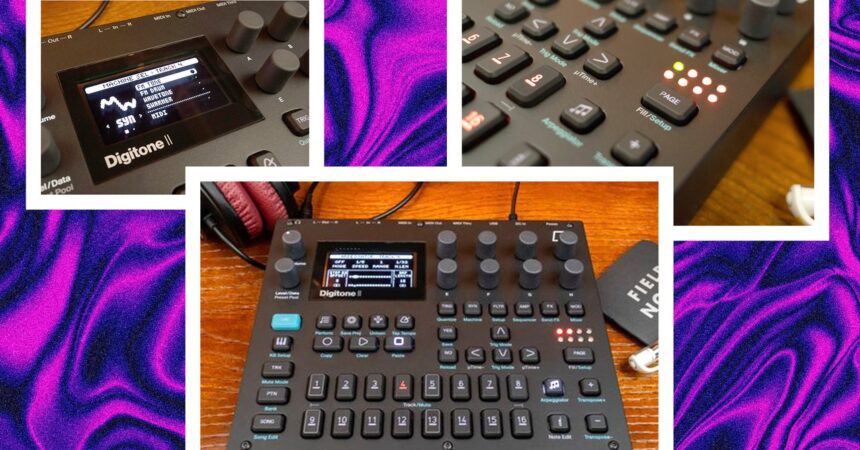The Digitone remains one of my all-time favorite synthesizers. While some might perceive this as a somewhat condescending remark—after all, the Digitone transcends mere synthesis—it’s true that it serves as a robust multitimbral groovebox paired with one of the most adaptable sequencers available. However, the four tracks and eight voices of polyphony occasionally felt a bit constraining to me. Additionally, its capabilities for drum sounds are not the strongest. This prompted me to position the Digitone on a stand, treating it purely as a desktop synth controlled via a MIDI keyboard.
On paper, the Digitone II appears to address many of these limitations. It boasts 16 voices across 16 tracks and introduces three entirely new synthesizer engines that broaden its sonic range, including one specifically engineered for percussion. In addition to these enhancements, it also incorporates the sequencing, modulation, and filter improvements we witnessed with the Digitakt II (8/10, WIRED Recommends). However, similar to its sample-centric counterpart, the Digitone II has experienced a significant price increase to $999. With the original now obtainable for as little as $350 on the second-hand market, the decision between the two isn’t quite straightforward.
Photograph: Terrence O’Brien
Discover the Latest Sound
No need for alarm; the four-operator FM engine from the original Digitone remains intact. While some individuals have claimed it lacks the same grit and character, I suspect those people are mistaken. I’ve tested several presets designed for the original model on the Digitone II, and I fail to notice any differences. It’s important to point out that unfortunately, you cannot transfer Digitone II presets onto the original Digitone, even though they utilize the base FM sound engine. There are reportedly some technical distinctions between them that remain hidden beneath the surface, but from my perspective, they do not influence the overall sound.
Photograph: Terrence O’Brien
The real differentiation of the Digitone II lies in its three new synth engines. Besides the original FM engine (termed FM Tone in the new version), there’s FM Drum, which modifies the original sound engine to cater specifically for percussion. Wavetone offers a less ethereal quality, delivering sounds reminiscent of phase distortion and wavetable synthesizers. While it’s still unmistakably digital, it avoids the harsher characteristics of FM. Lastly, Swarmer allows for exceptionally rich sounds suitable for leads and organs by layering six detuned oscillators above the primary one. I’ve discovered that many of my favorite new presets leverage the Wavetone engine, which adeptly captures the essence of classic electro and Krautrock tones.










